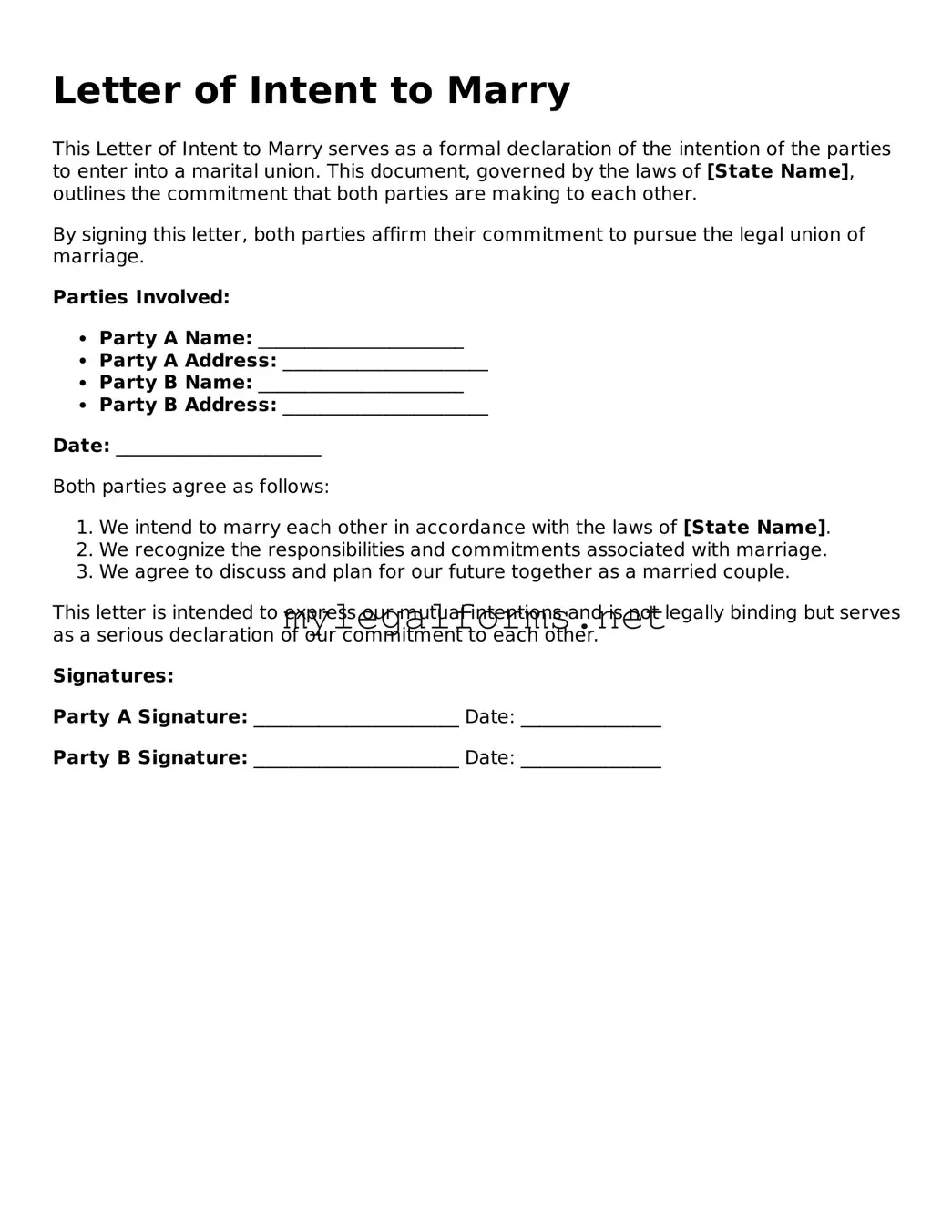Letter of Intent to Marry
This Letter of Intent to Marry serves as a formal declaration of the intention of the parties to enter into a marital union. This document, governed by the laws of [State Name], outlines the commitment that both parties are making to each other.
By signing this letter, both parties affirm their commitment to pursue the legal union of marriage.
Parties Involved:
- Party A Name: ______________________
- Party A Address: ______________________
- Party B Name: ______________________
- Party B Address: ______________________
Date: ______________________
Both parties agree as follows:
- We intend to marry each other in accordance with the laws of [State Name].
- We recognize the responsibilities and commitments associated with marriage.
- We agree to discuss and plan for our future together as a married couple.
This letter is intended to express our mutual intentions and is not legally binding but serves as a serious declaration of our commitment to each other.
Signatures:
Party A Signature: ______________________ Date: _______________
Party B Signature: ______________________ Date: _______________
